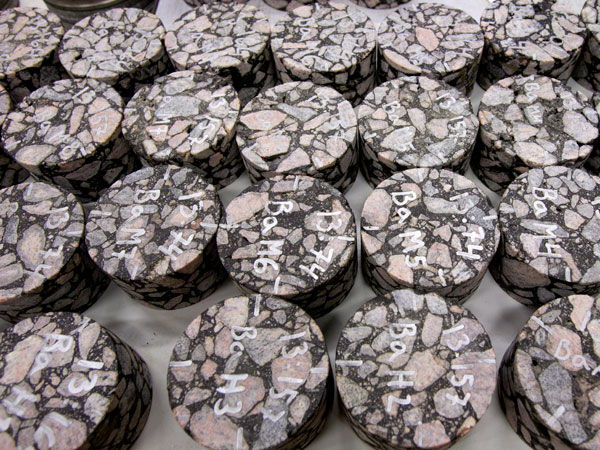The oldest is the test road machine, which was built during World War II. It was initially used to find better solutions for gravel road constructions. Then came asphalt. The concrete coffers for the gravel road construction were turned upside down(!), and then the machine could be used to improve asphalt roads. Today, it is mostly used to measure studded tyre wear and dust, but now faces another change: both its engines and control systems are being replaced.
“The old control system from the 1940s, with its knobs and primitive indicators, will disappear with the upgrade,” says Research Director Björn Kalman, a hint of wistfulness in his tone.

VTI’s road material laboratory is a venerable institution, to say the least. There was already a road material laboratory at the National Road Institute in Stockholm in the 1930s. It was located where KTH Royal Institute of Technology is today. In the 1970s, all operations were moved to Linköping. What is now called the road material laboratory actually consists of several laboratories with different orientations: asphalt, stone/ballast, and binders. There is also a frost lab.
The asphalt lab is littered with round test specimens. They look a bit like large hockey pucks. Some are manufactured in the laboratory, while others are drilled out of existing roads. Some are pock-marked with deep pits (“typical studded tyre wear”), while others have cracks. Some turn out to be from Denmark, while others are from Holland (results of commissioned research).
A holistic approach
The laboratory has been and remains central to the development of models that describe different types of road wear. In recent years, models have also been developed that show the combined results of various degradation processes.
“So instead of just seeing the results of studded tyre wear alone, we can observe the consequences of that wear in combination with heavier traffic, weather impact, etc.,” explains Björn Kalman. “We can thus simulate the entire degradation process of a road.”
Björn Kalman emphasises that the VTI laboratory is also particularly involved in the development of the materials used in the road industry. Many companies choose to conduct tests here. One could almost argue that no road is the same. For example, where studded tyre wear is a major issue, there are requirements for durable road materials. But durable roads also often become noisy roads. Narrow lanes cause wheel tracks to form faster than in wider lanes, where vehicles can “swerve around”. The 2+1 roads, which have proved so important for road safety, are examples of roads with these kinds of narrow lanes. The question then becomes, how do you make asphalt more resistant to deformation?
“In other words, the scenario is not static, which is why road material research is still so incredibly important,” concludes Björn Kalman.
Text: Catarina Gisby/redakta
Translated by: Semantix AB

Contact:
Björn Kalman
bjorn.kalman@vti.se
VTI, Swedish National Road and Transport Research Institute, Sweden






Follow us: